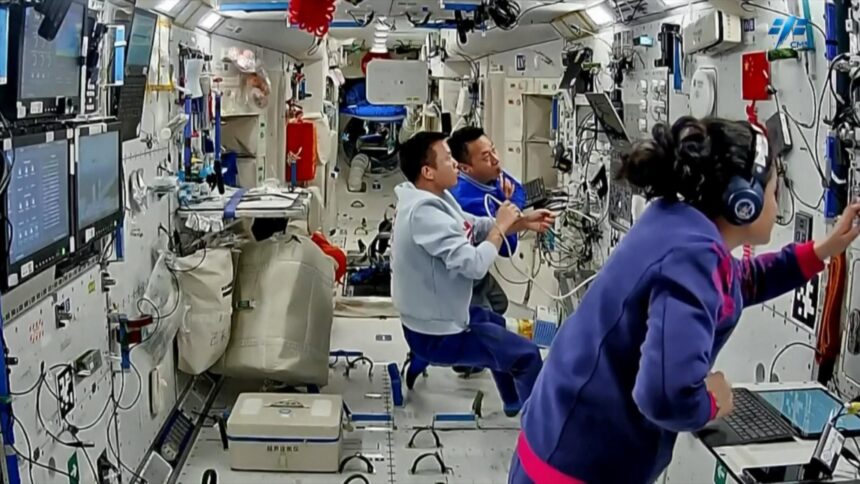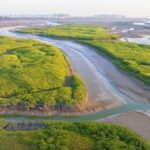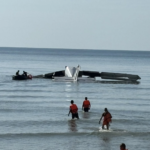Astronauts from the Shenzhou-19 mission aboard the China Space Station carried out various scientific experiments and tasks last week, as shared by the China Manned Space Agency (CMSA).
In a video released Sunday by the CMSA, astronauts Cai Xuzhe, Song Lingdong, and Wang Haoze were shown working inside the core module, Tianhe, where they’ve been stationed for nearly four months.
The team studied how space impacts muscles and bones by examining plantar pressure, joint movement, and muscle performance during running and resistance exercises under different loads. This research aims to better understand changes in muscle-tendon interactions during space travel.
They also performed vascular ultrasound tests to study blood flow patterns in a zero-gravity environment. By collecting data on organ function, blood dynamics, and structural characteristics, the crew hopes to shed light on how microgravity affects the body over time.
To explore how space travel affects eyesight, the astronauts underwent detailed eye exams using advanced equipment. The data will help researchers understand visual changes during extended missions and create strategies to protect eye health.
In addition to health-related studies, the crew worked on physics experiments, including reconfiguring equipment in the fluid physics rack and replacing the burner in the combustion science rack.
The astronauts also took part in training for tasks like rendezvous and docking missions. They handled maintenance on key experiment equipment and life support systems to keep the station running smoothly.
Astronauts for Shenzhou-20 and Shenzhou-21 missions
The Shenzhou-19 crew began their six-month mission on October 30 of last year. As part of their work, they are conducting 86 science and technology experiments, as outlined by the CMSA before launch.
Meanwhile, preparations are underway for the Shenzhou-20 and Shenzhou-21 missions, both planned for this year.
According to Yang Yuguang, vice chair of the Space Transportation Committee at the International Astronautical Federation, all astronauts—both primary and backup crews—are undergoing intense training. However, Yang did not disclose the names of the selected astronauts.
During their six-month missions, these crews will carry out scientific research and conduct spacewalks, similar to prior missions.
In addition to these missions, China is set to launch the Tianzhou-9 cargo craft this year to support ongoing operations at the space station. Yang also announced that the maiden flight of China’s Qingzhou cargo ship is expected this year.
This lightweight cargo vessel will handle urgent resupply tasks for the station, providing an exciting opportunity for space enthusiasts to witness its first launch.
Related News:
China to Launch Lunar Change-7 Mission in Early 2026

Geoff Thomas is an award winning journalist known for his sharp insights and no-nonsense reporting style. Over the years he has worked for Reuters and the Canadian Press covering everything from political scandals to human interest stories. He brings a clear and direct approach to his work.














